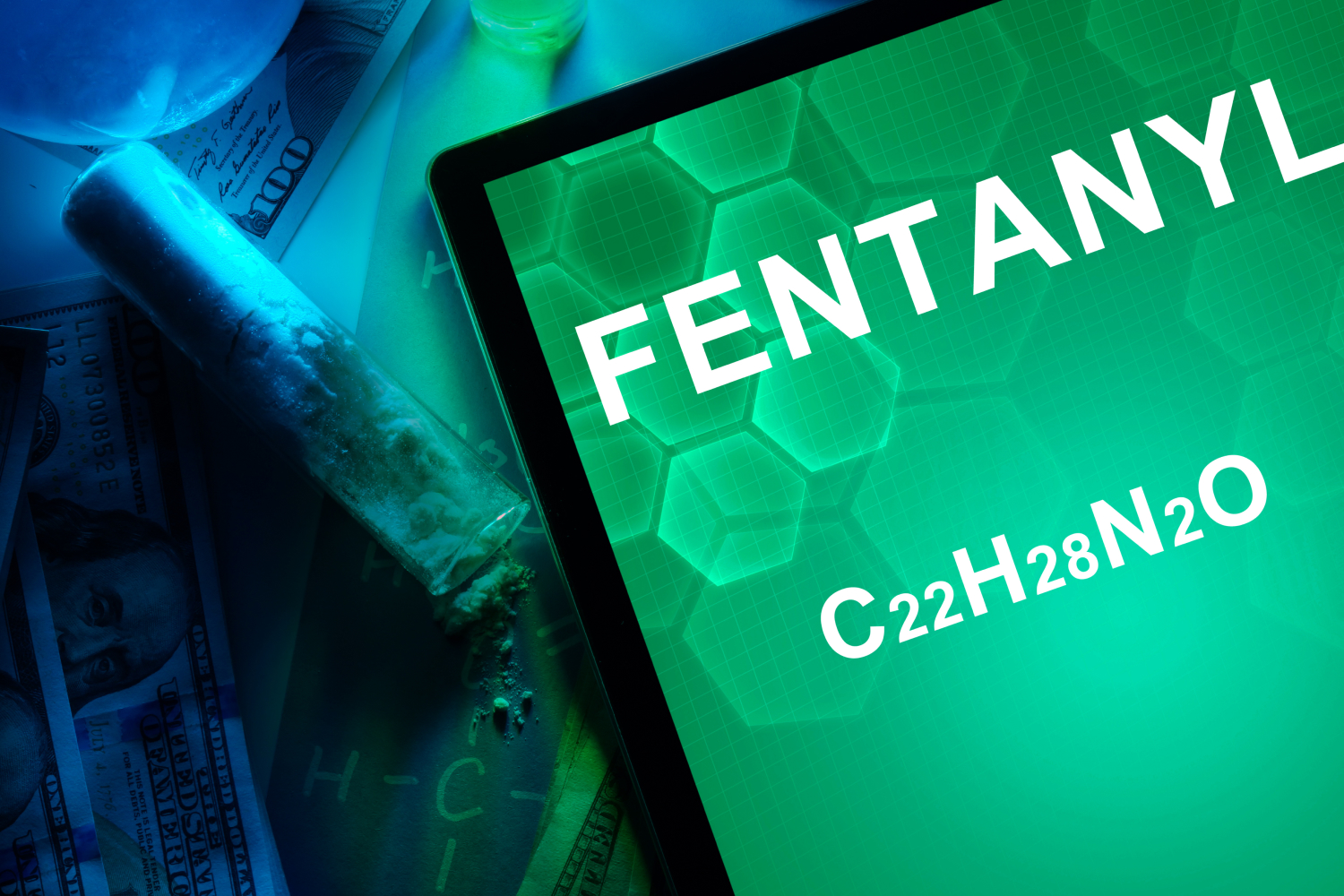If you have followed the news over the last few years, the rise in fentanyl overdoses has spiked, making it far more common to come across than one might think. In many cases, people that use fentanyl aren’t even aware that they are doing so. They often think they are using another drug, like cocaine or heroin.
However, fentanyl can be used to cut other drugs, which costs less for dealers, especially drugs sold on the streets. Many opioid overdoses in the last few years have resulted from fentanyl in a person’s system. Whether those people knowingly took fentanyl or not, the outcomes have been dire and intense intervention is needed.
For those that don’t overdose on fentanyl, it can become highly addicting and debilitating. To better understand just how long fentanyl stays in your system and how it affects your mind and body, keep reading.
What Is Fentanyl?
Pharmaceutical fentanyl is a synthetic opioid prescribed to some people to help with severe, uncontrollable pain. Though not frequently prescribed due to its high risk for addiction, it is given out as lozenges or transdermal patches. Compared to morphine, it takes significantly less of the drug to manage pain.
While pharmaceutical fentanyl exists and can contribute to someone’s addiction, most of what harms the general public is illegally made fentanyl. This illegal fentanyl gives off similar feelings as heroin does, and is often mixed with heroin or cocaine.
For many people that use heroin or cocaine, they aren’t being made aware that their drugs have fentanyl in them, which is leading to an influx in overdose and death. A safe dosage of fentanyl is almost impossible to estimate on your own. The margin for mistakes is very slim, putting fentanyl use into the high-risk category.
How Does Fentanyl Work?
Almost immediately after consuming fentanyl, the user begins to feel its effects. Fentanyl attaches to opioid receptors and activates them to impact the pain and emotion part of your brain.
It also gives you a burst of dopamine that can make you feel euphoric, only reinforcing further usage. However, as much as it might make you feel good, there is a high possibility of it slowing your breathing and leading to overdose.
In many cases, we end up reading headlines that involve the words “accidental” and “fentanyl”, because for many people they aren’t aware that it is what they are using. Fentanyl is highly potent — somewhere between 50 and 100 times as potent as morphine is.
If you, knowingly or unknowingly, consume too much fentanyl, you are putting yourself at a very high risk of overdose and death.
Effects of Fentanyl
Fentanyl can suppress functions in the central nervous system (CNS) that relate to breathing, heart rate, and temperature regulation. Fentanyl additionally increases the amount of dopamine in the body, which is why there is a high rate of addiction with its usage.
You may feel a sense of calmness, peace, euphoria, and sedation, which might be what you’re looking for. However, if you use more than what is considered to be a “safe” dosage, you could find yourself in a lot of trouble.
Other effects of fentanyl are:
- Dizziness
- Nausea
- Constipation
- Drowsiness
- Confusion
- Shallow breathing
- Vomiting
- Hot flashes and sweating
Signs and Symptoms of Fentanyl Use
If you fear that you or your loved one is being impacted by fentanyl use, there are some major signs that you can look out for before it’s too late.
- If a person is continuously “nodding off”
- Showing impaired judgment about the drug
- Not taking the side effects of risk of death seriously
Additionally, someone using fentanyl unknowingly might go through withdrawals like:
- Insomnia
- Diarrhea
- Respiratory depression
- Respiratory arrest
- Dilated pupils
- Muscle aches
- Excessive sweating
- Fast heart rate
- Paranoia
How Long Does It Stay In Your System?
Fentanyl can stay in your system for a varying amount of time, depending on how much you use, your biological makeup, metabolism, and how you tested for it. The effects of fentanyl may only last for a few hours, but it stays in your system for a lot longer.
That means that if you are trying to estimate how long you have to go without using it for it not to be detected in your system, you will have to know what kind of testing you will be undergoing.
- Urine: If you undergo urine testing, fentanyl can be detected anywhere from one to three days after using it.
- Hair: Your hair follicles will carry fentanyl in them for up to three months, which means that even if you haven’t used it in several months, it can still be detected.
- Blood: Fentanyl can be detected in your bloodstream for five to 48 hours.
- Saliva: Testing through your saliva is ineffective in detecting fentanyl.
What Influences How Long Fentanyl Stays In Your System?
Despite how long fentanyl can be detected in the body, some factors influence how long it actually is inside of you. Your metabolism, weight, age, drug use, and kidney and liver function can all influence how long fentanyl impacts you and stays in your system.
However, the most influential factor that plays into how long fentanyl stays in a person’s system is the method of administration. Each method of administration has a different “half-life.” A “half-life” refers to the amount of time half of the drug takes to exit the body. After half of the drug has left the system, most of its effects of it have worn off.
The main three administration methods are: intravenous, transdermal, and transmucosal.
Intravenous
Intravenous (injected) fentanyl has a half-life of two to four hours, depending on how big the dosage of fentanyl is that you consume. Fentanyl that is injected can have a pretty immediate and jarring effect on a person, but after a few hours, most of the side effects should have worn off. However, this burst of the drug can give an extremely high risk for overdose and be potentially fatal.
Transdermal
Fentanyl administered through an adhesive patch that goes onto the skin has a much slower progression and longer half-life. The half-life of transdermal fentanyl absorption is up to 17 hours, meaning it can impact you for that entire time.
Transmucosal
Transmucosal fentanyl is absorbed through the mucous membranes in the mouth in the form of lozenges and has a half-life that sits between five and 14 hours. This depends on the formulation of those lozenges, dosage, and other factors.
How Is Fentanyl Addiction Treated?
Someone with a fentanyl addiction might not even realize that is what they are struggling with. They might think they are using other drugs without realizing that fentanyl is present. Before they know it, the drug they think they are using no longer cuts it, and they seek more powerful substances.
Fentanyl is sought when people no longer get the euphoric feelings their other substances brought to them. Addiction can creep up on you slowly before you realize it’s taking over your life.
Getting help might involve medication-assisted treatment (MAT) in conjunction with therapy and counseling. Seeking out treatment facilities might be the most efficient and safe way to overcome fentanyl addiction, but there are other ways that you can seek out support.
Seek Treatment With Soba Recovery
Fentanyl addiction can be extremely debilitating and seemingly impossible to fight on your own. The risks that come with withdrawals from it make seeking out a detoxification center your best bet for a safe start to your recovery.
With Soba Recovery Center of San Antonio, Texas, you gain access to medical professionals who are available around the clock to support you. After going through the detoxification process, you have options for both inpatient treatment and outpatient treatment services, choosing which fits best with your needs and capabilities.
Overcoming fentanyl addiction is no easy feat, but you shouldn’t give up because it’s hard. Instead, use the resources and help made available at Soba Recovery Center so that you can get back to living your best drug-free life.
Reach out to a representative today to learn more about what Soba Recovery Center can offer to you on your path to sobriety.
Sources:
Drug Overdose Death Rates | National Institute on Drug Abuse (NIDA)





